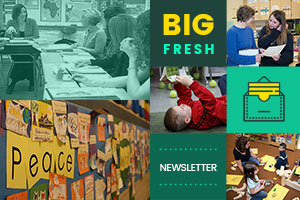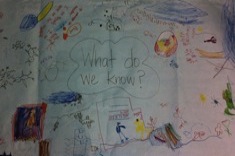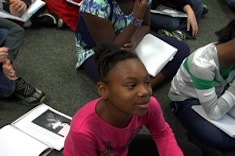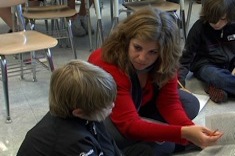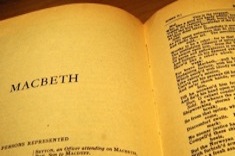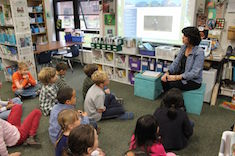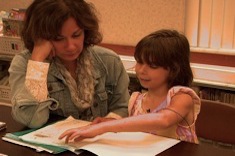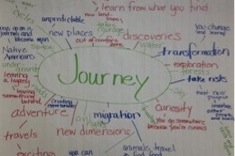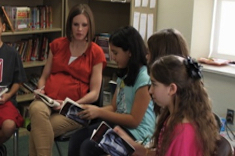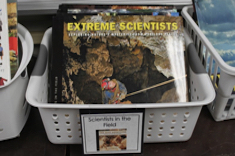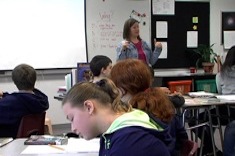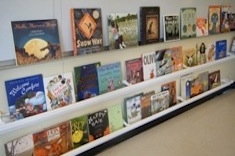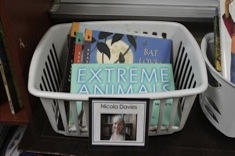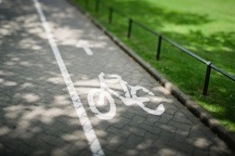Library
Choice Literacy Articles & Videos
The Choice Literacy library contains over 3,000 articles and 900 videos from 150+ contributors. Classic Classroom and Literacy Leadership subscribers have access to the entire library. Content is updated continuously, with five to six new features published each week.
Latest Content
Act III: Exploring Subtext with A Midsummer Night’s Dream (Shakespeare and the Common Core Series)
Gretchen Schroeder concludes her Shakespeare in the Age of the Common Core Series with activities to explore subtext in A Midsummer Night’s Dream.
The Big Fresh January 11, 2014 Pull Over
Online student research is explored in this week’s Big Fresh.
The Big Fresh January 4, 2014 Honor the Time
Goals are the focus of this week’s Big Fresh.
Penguins Are Amazing!: Informational Writing Comes Alive in Kindergarten
Can kindergartners do informational writing? Keri Archer finds the answer is yes, as she applies Common Core standards to inquiry work in her classroom.
Common Core Research Shifts
Maria Caplin explains four changes she is making in her fifth-grade classroom with writing instruction because of the Common Core.
Whole Class Research Planning in 4th Grade
Andrea Smith’s fourth graders brainstorm next steps for their research project on owl habitats, which includes writing a research proposal.
Act II: Understanding Hamlet Through Close Reading (Shakespeare and the Common Core Series)
Gretchen Schroeder continues her Shakespeare and the Common Core series on teaching the classics in high school, explaining how she uses Hamlet in creative ways to teach close reading strategies.
Streamlining Research Check-ins
Gretchen Taylor finds streamlining research check-ins in her middle school classroom is easy to do when she uses a simple online tool to eliminate a mountain of paper.
Keep Going
Ruth Ayres has advice for moving forward, staying positive, and focusing on what’s important.
Tracking Characters: A Conferring Tip
Aimee Buckner teaches a fourth grader a strategy for using a sticky note to keep track of characters when there are multiple narrators in a novel.
Rereading for Writing: Conferring with Jack
Katie DiCesare confers with first grader Jack, using rereading to help him rethink the title of his story and possibilities for revision.
Act I: Delving into Deep Questions with Macbeth (Shakespeare and the Common Core Series)
Gretchen Schroeder launches a three-part series on Shakespeare in the Age of the Common Core. This week’s installment is a fresh take on teaching Macbeth to high school students.
The Big Fresh December 21, 2013 Learning to Love Nonfiction
Student engagement is the focus of this week’s Big Fresh.
A Closer Look at Engagement
Are the terms stamina and engagement synonymous? Cathy Mere defines the terms by observing her first graders.
Rethinking Nonfiction Topic-Based Text Sets
Franki Sibberson concludes her series on redesigning nonfiction sections of classroom libraries in the age of the Common Core.
Inside and Outside Views: Conferring with Rebecca
Ruth Ayres confers with first grader Rebecca about perspective and illustrations in her writing.
Journeys and Quests: January Literacy Contracts
Middle school teachers Megan Ginther and Holly Mueller focus on journeys and quests as the theme of their January Literacy Contracts in the latest installment of their year-long series.
The Big Fresh December 14, 2013 If the Shoe Fits
Holiday reading is the focus of this week’s Big Fresh.
Tell Me More
Gretchen Taylor finds the three little words “tell me more” provide breakthroughs in helping her middle school students respond to reading.
Rethinking Nonfiction Series Books
Franki Sibberson explains how she features nonfiction series books in her classroom library.
Modeling Annotation in 8th Grade
This video from Katie Baydo-Reed’s eighth-grade classroom is the second part of a series on teaching annotation skills in middle school. A catch-up link to the first video in the series is provided.
Middle School Design: Reading Gutters
Katie Doherty explains how reading gutters, an inexpensive design feature, dress up her middle school classroom and build community at the same time.
The Big Fresh December 7, 2013 Come On, Man
Teaching conventions is the topic of this week’s Big Fresh.
Rethinking Nonfiction Author Baskets
Franki Sibberson realizes she needs to highlight nonfiction authors in new ways in her classroom library.
Explanatory Grammar Moves: Right-Branching Sentences
Jeff Anderson continues his Explanatory Grammar Series with a feature on the power of right-branching sentences.
Spelling Cycles: An Alternative to Weekly Spelling Lists
Max Brand developed Spelling Cycles as an alternative to weekly spelling tests. He explains how they work with an example from a third-grade class.
Second-Grade Minilesson on Capital Letters
Ruth Ayres presents a minilesson on capital letters to a second-grade class.
The Big Fresh November 30, 2013 5-2-1-0
We look at nonfiction in classroom libraries in this week’s Big Fresh.
Finding Topics in Writer’s Notebooks Minilesson
Sean Moore shares the importance of using a writer’s notebook to discover topics in this minilesson with his second-grade students from early in the year.
Mock Newbery Club
Katherine Sokolowski has suggestions for organizing and hosting a Mock Newbery Club in the weeks before the award is given in late January.
Browse Content By
Type
Category
- Assessment Tools
- Big Fresh Archives
- Booklists
- Choice Numeracy
- Classroom Design
- Common Core
- Community Building
- Conferring
- Content Literacy
- Digital Literacy
- English Language Learners
- Equity
- Family Relations
- Free Samples
- Guiding Groups
- Leadership
- Literacy Coaches
- Mentor Texts
- Minilessons
- New Teacher Mentors
- Podcasts
- Poetry
- Quote Collections
- Reading Strategies
- Self Care
- Struggling and Striving Learners
- Talking and Listening
- Teacher Study Groups
- Teaching Reading
- Teaching Writing
- Word Study and Vocabulary
Author
- Melissa Quimby
- Nawal Qarooni
- Gwen Blumberg
- Julie Cox
- The Lead Learners
- Hannah Tills
- Josie Stewart
- Ruth Metcalfe
- Mallory Messenger
- Becca Burk
- Jodie Bailey
- Vivian Chen
- Mary Brower
- Tiffany Abbott Fuller
- Stephanie Affinito
- Ruth Ayres
- Leigh Anne Eck
- Heather Fisher
- Shari Frost
- Julie Johnson
- Suzy Kaback
- Gigi McAllister
- Shirl McPhillips
- Melanie Meehan
- Cathy Mere
- Debbie Miller
- Tara Barnett and Kate Mills
- Tammy Mulligan
- Dana Murphy
- Bitsy Parks
- David Pittman
- Brenda Power
- Heather Rader
- Matt Renwick
- Mandy Robek
- Christy Rush-Levine
- Gretchen Schroeder
- Jen Schwanke
- Brian Sepe
- Katherine Sokolowski
- Stella Villalba
- Jennifer Vincent
Grade Level
Choice Literacy Membership
Articles
Get full access to all Choice Literacy article content
Videos
Get full access to all Choice Literacy video content
Courses
Access Choice Literacy course curriculum and training


